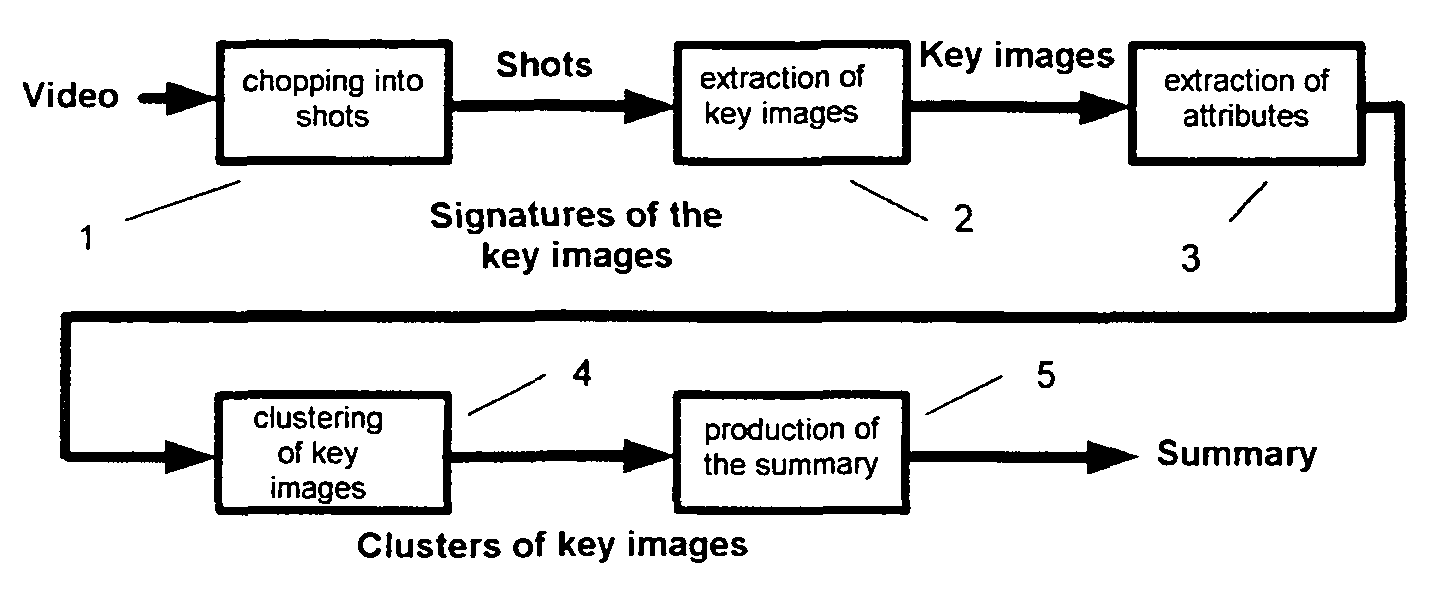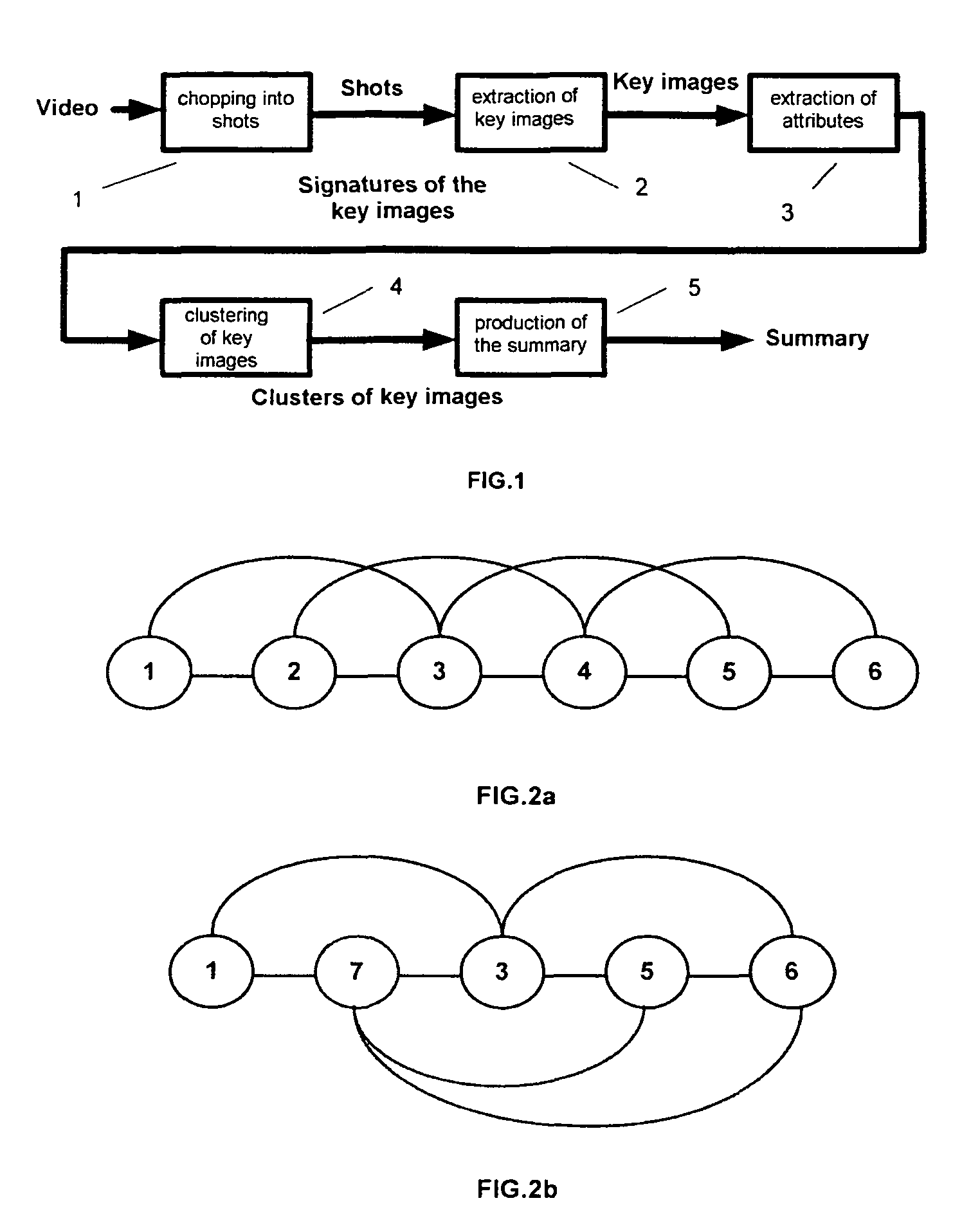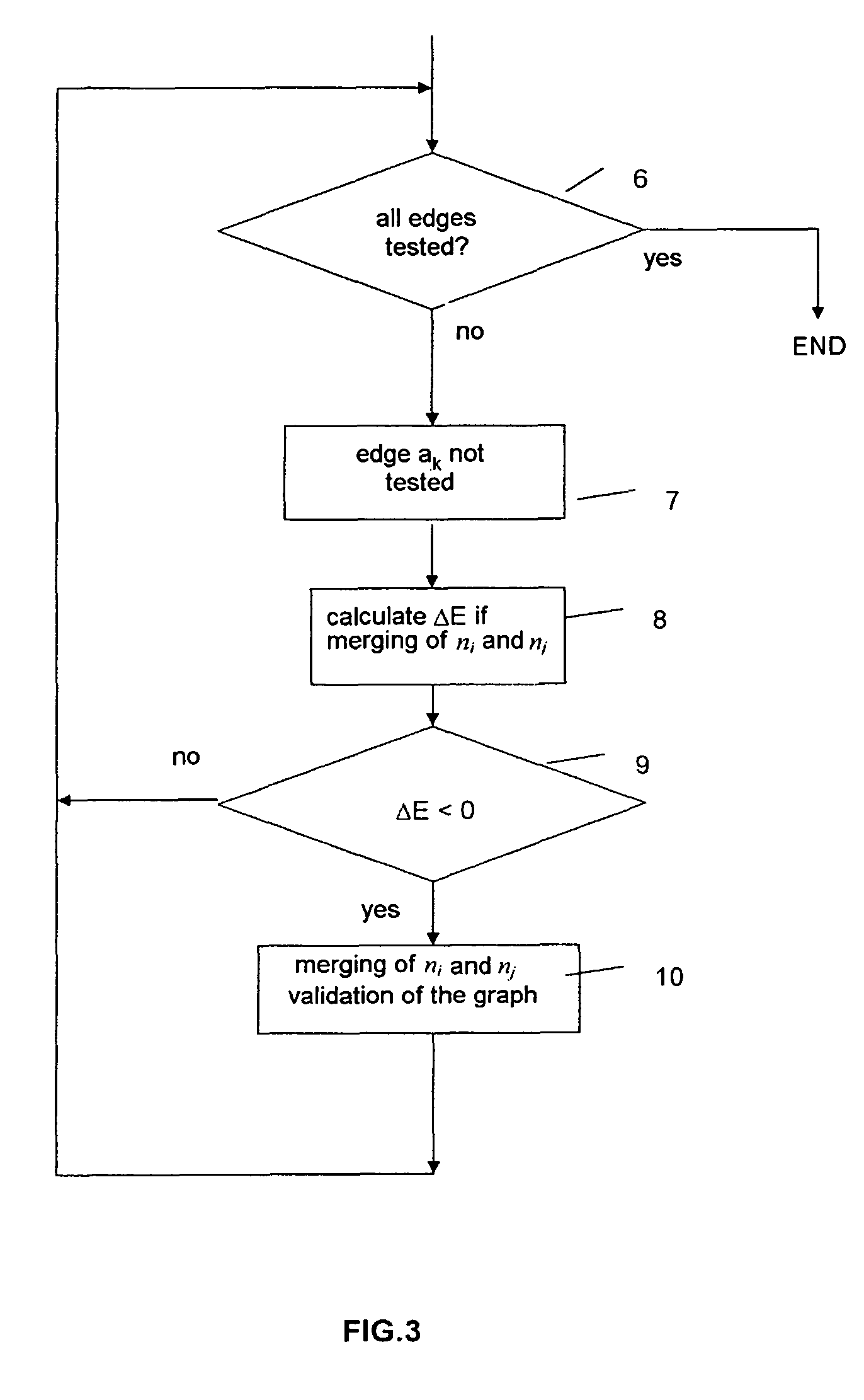Method of grouping images from a video sequence
a video sequence and image grouping technology, applied in the field of clustering key images, can solve the problems of difficult fixation a priori, inability to cluster, and large size of the cluster generated by the method
- Summary
- Abstract
- Description
- Claims
- Application Information
AI Technical Summary
Benefits of technology
Problems solved by technology
Method used
Image
Examples
Embodiment Construction
[0025]The procedure proposed relies on a graph structure. A graph consists of a set of nodes and edges. A node ni symbolizes a shot or cluster of video shots that are similar according to the visual and temporal distance chosen, each shot Pi being represented by at least one key image. The edges connect the nodes together, two nodes that are not connected by an edge not being potentially mergeable.
[0026]A size of temporal window T is chosen. It is given as a maximum number of shots T separating two shots in the video sequence. Upon the initialization of the graph, edges are created on the basis of a given node corresponding to a given shot towards each of the nodes whose shots lie in the temporal window of this given shot.
[0027]In a practical manner, the nodes are first connected by edges according to the sequential unfurling of the video sequence. This progression is subsequently taken into account, when adding the complementary edges, for the application of the temporal window. Th...
PUM
 Login to View More
Login to View More Abstract
Description
Claims
Application Information
 Login to View More
Login to View More - R&D
- Intellectual Property
- Life Sciences
- Materials
- Tech Scout
- Unparalleled Data Quality
- Higher Quality Content
- 60% Fewer Hallucinations
Browse by: Latest US Patents, China's latest patents, Technical Efficacy Thesaurus, Application Domain, Technology Topic, Popular Technical Reports.
© 2025 PatSnap. All rights reserved.Legal|Privacy policy|Modern Slavery Act Transparency Statement|Sitemap|About US| Contact US: help@patsnap.com



